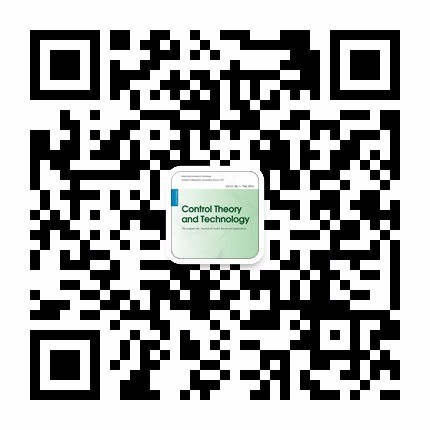| quotation: | | [Copy] |
| | Erlong Kang1,2,Yang Liu1,et al.[en_title][J].Control Theory and Technology,2023,21(3):334~351.[Copy] |
|
| |
|
|
| This Paper:Browse 320 Download 0 |

码上扫一扫! |
| Sliding mode-based adaptive tube model predictive control for robotic manipulators with model uncertainty and state constraints |
| ErlongKang1,2,YangLiu1,3,HongQiao1,4,5 |
|
|
| (1 State Key Laboratory of Multimodal Artificial Intelligence Systems, Institute of Automation, Chinese Academy of Sciences, Beijing 100190, China
2 Beijing Key Laboratory of Research and Application for Robotic Intelligence of Hand-Eye-Brain Interaction, Beijing 100190, China;3 The School of Mechanical Engineering, University of Science and Technology Beijing, Beijing 100083, China;4 University of Chinese Academy of Sciences, Beijing 100049, China
5 CAS Center for Excellence in Brain Science and Intelligence Technology, Shanghai 200031, China) |
|
| 摘要: |
| In this paper, the optimal tracking control for robotic manipulatorswith state constraints and uncertain dynamics is investigated,
and a sliding mode-based adaptive tube model predictive control method is proposed. First, utilizing the high-order fully
actuated system approach, the nominal model of the robotic manipulator is constructed as the predictive model. Based on
the nominal model, a nominal model predictive controller with the sliding mode is designed, which relaxes the terminal
constraints, and realizes the accurate and stable tracking of the desired trajectory by the nominal system. Then, an auxiliary
controller based on the node-adaptive neural networks is constructed to dynamically compensate nonlinear uncertain dynamics
of the robotic manipulator. Furthermore, the estimation deviation between the nominal and actual states is limited to the tube
invariant sets. At the same time, the recursive feasibility of nominal model predictive control is verified, and the ultimately
uniformly boundedness of all variables is proved according to the Lyapunov theorem. Finally, experiments show that the
robotic manipulator can achieve fast and efficient trajectory tracking under the action of the proposed method. |
| 关键词: Tube-based model predictive control · Robotic manipulator · Sliding mode · Node-adaptive neural networks · Model uncertainty |
| DOI:https://doi.org/10.1007/s11768-023-00174-7 |
|
| 基金项目:This work was supported in part by the National Natural Science Foundation of China under Grant 91948303 and 6210020614, in part by the Strategic Priority Research Program of Chinese Academy of Science under Grant XDB32050100. |
|
| Sliding mode-based adaptive tube model predictive control for robotic manipulators with model uncertainty and state constraints |
| Erlong Kang1,2,Yang Liu1,3,Hong Qiao1,4,5 |
| (1 State Key Laboratory of Multimodal Artificial Intelligence Systems, Institute of Automation, Chinese Academy of Sciences, Beijing 100190, China
2 Beijing Key Laboratory of Research and Application for Robotic Intelligence of Hand-Eye-Brain Interaction, Beijing 100190, China;3 The School of Mechanical Engineering, University of Science and Technology Beijing, Beijing 100083, China;4 University of Chinese Academy of Sciences, Beijing 100049, China
5 CAS Center for Excellence in Brain Science and Intelligence Technology, Shanghai 200031, China) |
| Abstract: |
| In this paper, the optimal tracking control for robotic manipulatorswith state constraints and uncertain dynamics is investigated,
and a sliding mode-based adaptive tube model predictive control method is proposed. First, utilizing the high-order fully
actuated system approach, the nominal model of the robotic manipulator is constructed as the predictive model. Based on
the nominal model, a nominal model predictive controller with the sliding mode is designed, which relaxes the terminal
constraints, and realizes the accurate and stable tracking of the desired trajectory by the nominal system. Then, an auxiliary
controller based on the node-adaptive neural networks is constructed to dynamically compensate nonlinear uncertain dynamics
of the robotic manipulator. Furthermore, the estimation deviation between the nominal and actual states is limited to the tube
invariant sets. At the same time, the recursive feasibility of nominal model predictive control is verified, and the ultimately
uniformly boundedness of all variables is proved according to the Lyapunov theorem. Finally, experiments show that the
robotic manipulator can achieve fast and efficient trajectory tracking under the action of the proposed method. |
| Key words: Tube-based model predictive control · Robotic manipulator · Sliding mode · Node-adaptive neural networks · Model uncertainty |
|
|
|
|
|

